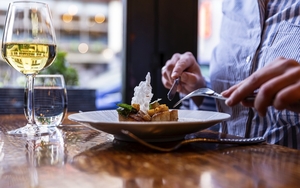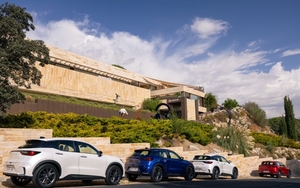Neil Sowerby hits new heights with a Tirolean summer idyll
ZIRBENSCHNAPS and Pfifferlinge, Rococo, Maximilian and Swarovski Crystal, wolves that howl when a cathedral bell rings… these are a few of my favourite things. Yes, I went to Austria in search of the sound of music, but not to Salzburg. Innsbruck was our summer bolthole, more than just the gateway to Tirolean ski slopes.
The talking point is the prominent, burnished codpiece of the 13th century Rudolf I. Commentators have speculated that generations have rubbed it to that orange hue as a lucky charm
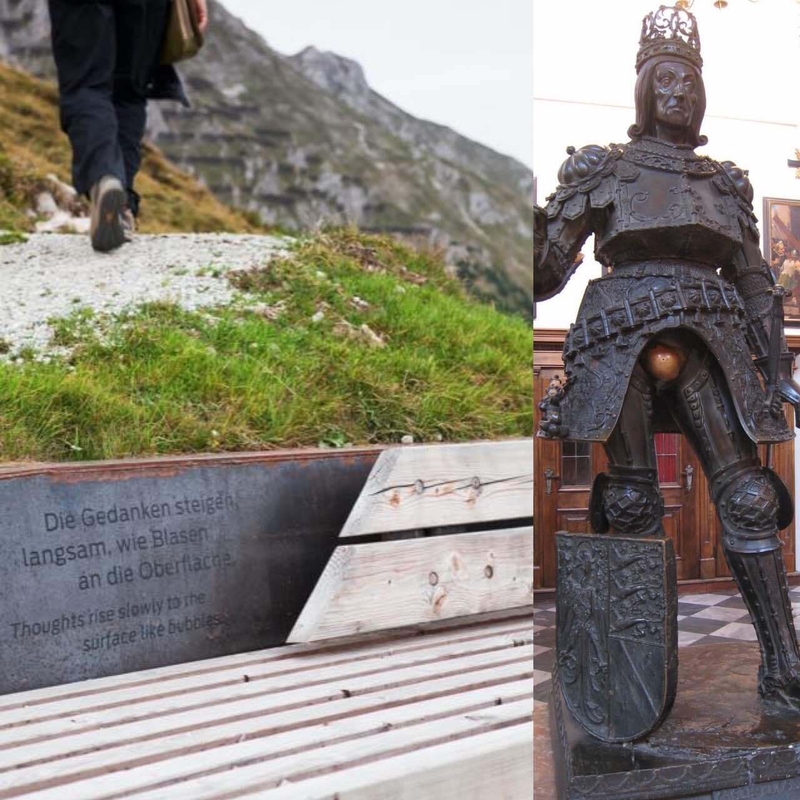
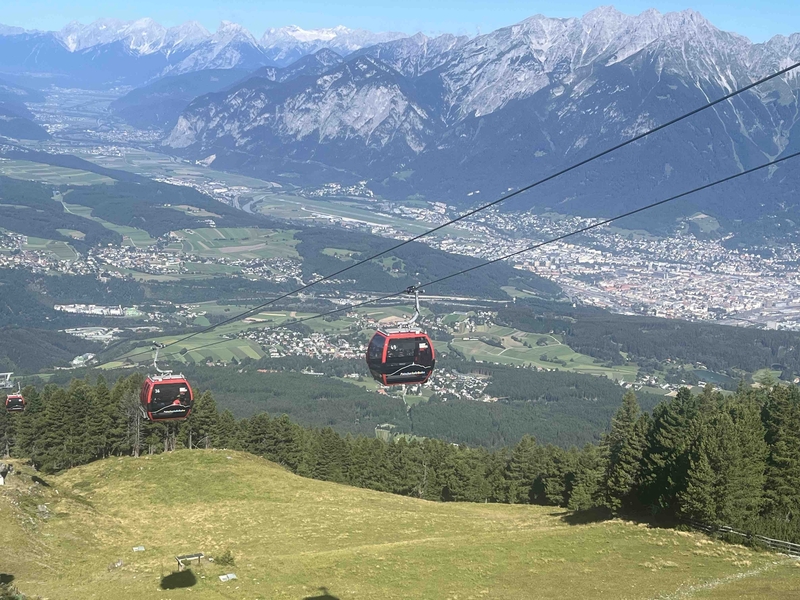
When the snows thaw its hiking trails are high altitude heaven, while the city itself is a vibrant hub of entertainment and culture, fine food and drink. The name means bridge over the River Inn and its crossroads position above the Brenner Pass into Italy has ensured its strategic importance. Long gone, though, are its glory days as a Habsburg capital. The in-bred empire moved on; many of its trappings remain. And how rewarding they are. But first a musical interlude. The ‘slow movement’ that lasted centuries.
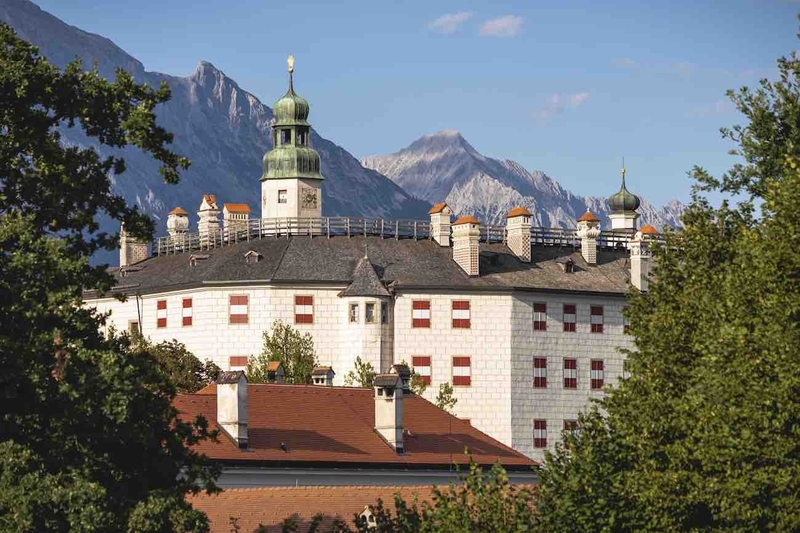
The hills are alive…with the sound of Vivaldi
Simon Winder, in his entertaining Danube – A Personal History of Habsburg Europe, attributes the city’s overshadowing as a musical centre by Vienna and Salzburg to a boat capsizing in the Danube in 1665. With it sank all the irreplaceable manuscripts of the Innsbruck Music Library, consigning talented court composers to oblivion.
Sounds a mite apocryphal, but the mysterious saga has a happy ending. It’s called the Innsbrucker Festwochen der Alten Musik, an annual August celebration of Early Music across a string of atmospheric venues. Founded in 1976, the festival links the present to the glorious Renaissance and Baroque past, when Innsbruck boasted the first opera house built north of Italy. On the site is today’s more prosaic Congress Centre.

That operatic tradition continued with this year’s programme featuring a string of revivals and premieres, among them a couple of stage works by Antonio Vivaldi. We chose instead to take in his powerful Stabat Mater motet, performed by Rinaldo Alessandrini's Concerto Italiano and Norwegian mezzo-soprano Marianne Beate Kielland (originally it was scored for a castrato). City centre venue the Jesuitenkirche was suitably Baroque still, despite serious Second World War damage and later restoration.
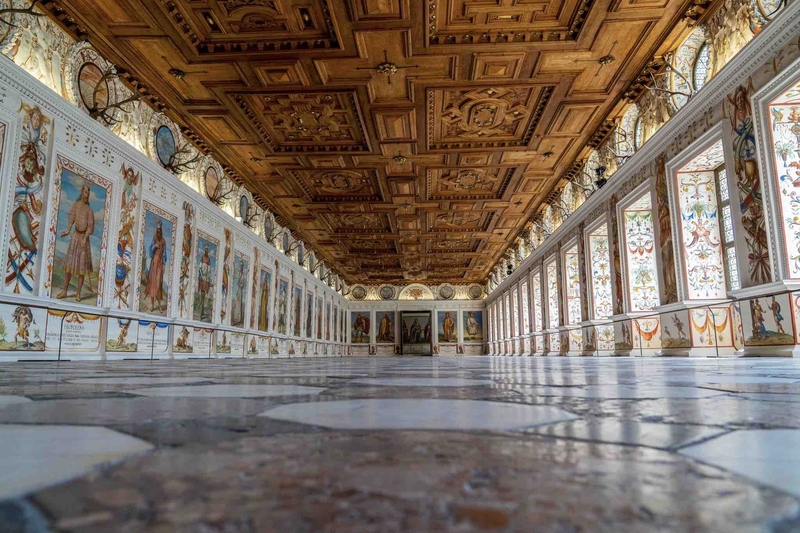

The wonders of castles and crystals
We would love to have also seen a concert in the spectacular Spanish Room of the Schloss Ambras. This Renaissance castle sits high above the city and still houses Archduke Ferdinand II’s Kunst-und-Wunderkammer art and curiosities collection. King of the castle is probably the Ambraser Tödlein (Little Death), a small but intricate sculpture carved from a single piece of wood by Hans Leinberger around 1520. It forms part of the castle’s current special exhibition, on until October 23. Terribly Beautiful 2.0 – Monstrosities in Art is dedicated to sinister beings, demons and hybrid horrors across several centuries, and features the only surviving portrait of Vlad Ţepeş (Vlad the Impaler) and Peter Paul Rubens’ famous Head of Medusa.
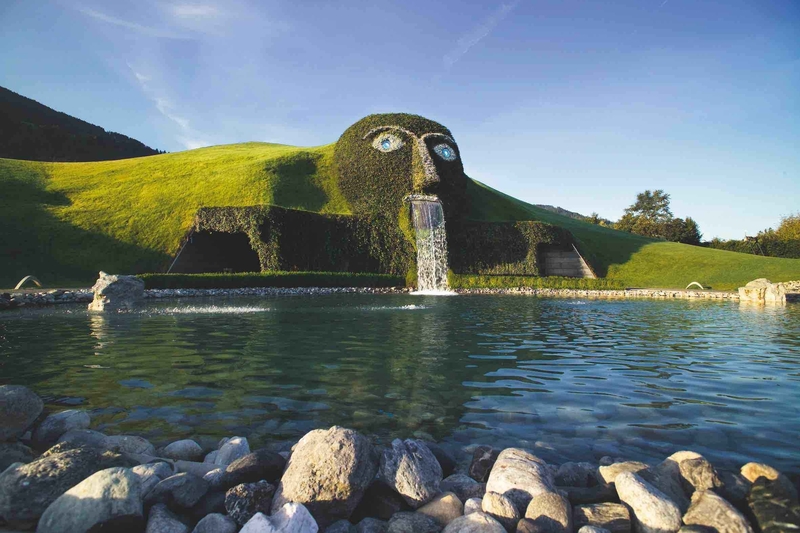
20km further east in Wattens is a contemporary collection of different wonders, obliquely paying homage to the Ambras collection. Swarovski Crystal Worlds has attracted more than 16 million visitors since opening in 1995. What started as a showcase for the Swarovski family’s crystal-cutting brand has evolved into a mind-blowing, immersive artistic experience. Our own Brian Eno has been one of many creative artists and designers commissioned to interpret crystal in unique ways.
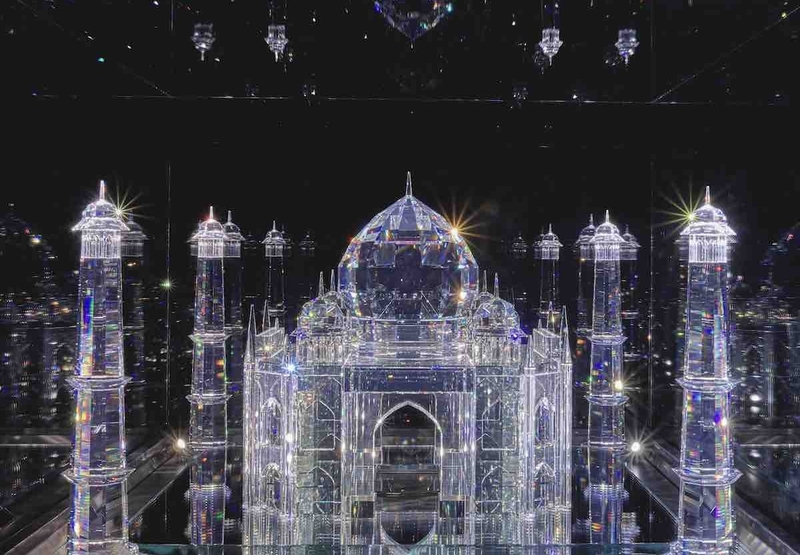
Centrepiece is the 18 Chambers of Wonder. Arrive via the shuttle bus from Innsbruck and you’ll enter this underground exhibition space (think Aladdin) through the head of a giant that dominates the 7.5 acre Swarovski grounds, designed by British garden guru Tony Howard. One of the garden highlights is Cao Perrot, which consists of more than 800,000 hand-mounted crystals. It reflects and refracts daylight depending on the position of the sun. There is a rotating series of special exhibitions, too. The latest, The Art of Performance, celebrates Swarovski’s longstanding relationship with Hollywood through a lavish array of iconic costumes against a crystal backdrop.
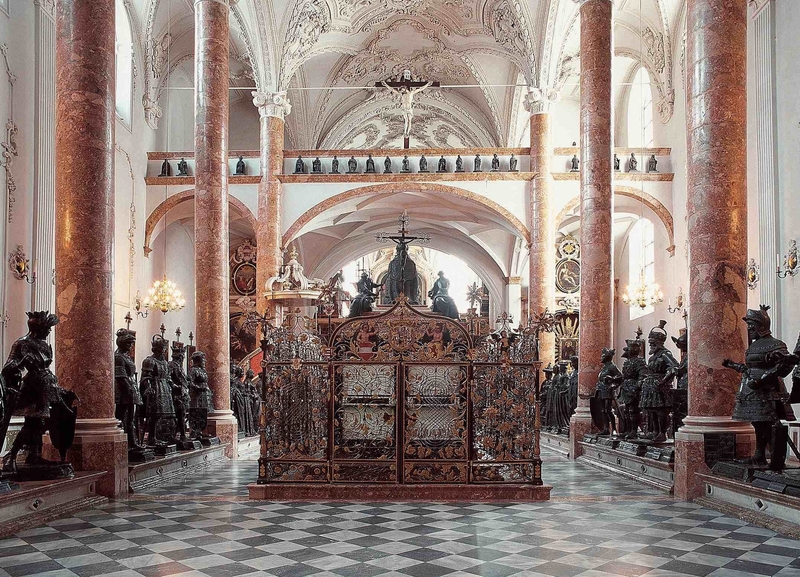
Maximilian and his magnificent mausoleum
Stunning, but Innsbruck’s one essential spectacle is definitely the Archduke Maximilian I mausoleum attached to the Hofkirche (court church). This Holy Roman Emperor (1459-1519), who consolidated Habsburg rule, remains one of Central Europe’s most vital, innovative figures, both a warrior and an intellectual, yet this commemoration is truly oddball. First of all he is not buried there but in the castle chapel at Wiener Neustadt 300 miles to the east.
The monumental white marble and gilt tomb had originally been planned for the castle chapel there, but had proved too small to accommodate the funerary procession of 28 life-size black statues of his ancestors, men and women, some real, some mythical (King Arthur anyone?). In his later years Maximilian had obsessively planned for his own demise. His coffin travelled everywhere with the increasingly ascetic emperor. Snubbing Innsbruck was partly down to its good burghers’ refusal to bail him out in the face of his colossal debts.

It wasn’t until 1555 that the full set of figures was completed and placed in the newly built Gothic Hofkirche, all overseen by his grandson, Ferdinand I. The whole composition is a monument to Habsburg familial devotion. At the heart is a recumbent Maximilian flanked by the Four Virtues on the top of the black marble cenotaph inscribed with bas-reliefs of scenes from his life.
The bronze ‘Schwarze Mander’ statues are a mixed bag, the best a trio by the great Albrecht Dürer, yet the talking point is the prominent, burnished codpiece of the 13th century Rudolf I. Commentators, including the whimsical Mr Winder, have speculated that generations have rubbed it to that orange hue as a lucky charm.
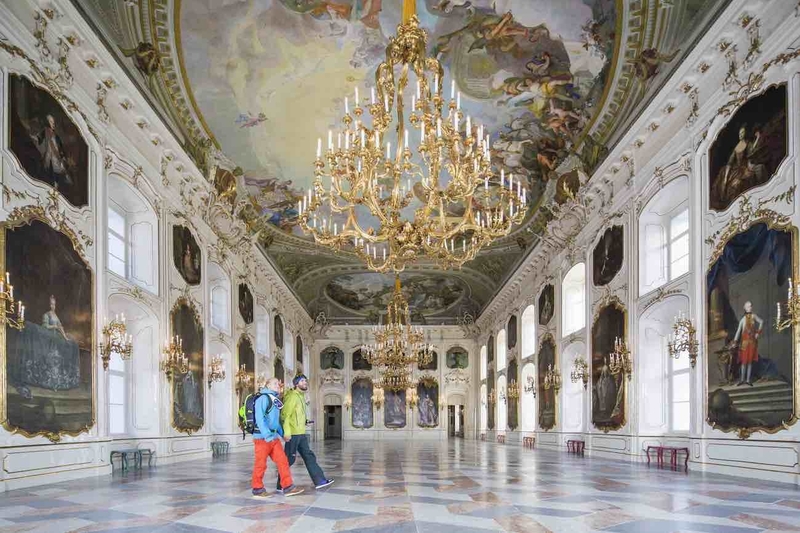
Palaces, churches and an iconic Golden Roof
Innsbruck has its share of gilt and grandeur to match the magnificence of the mountains that cradle the city. Witness the Hofburg (Imperial Palace), whose current incarnation is down to another formidable Hapsburg, the 18th century’s Maria Theresa. She transformed Maximilian’s Gothic pile into the epitome of Baroque chic with the usual lugubrious afterthoughts. When her husband Emperor Francis I suddenly passed away she converted his death chamber into a chapel and she also founded a convent where 12 nobles were to pray for Francis for several hours each day.
In truth there is a certain imperial aloofness to the succession of public rooms with the exception of the ‘Inner Apartment’, refurbished in the mid 19th century by Archduke Karl Ludwig. He had a lifelong crush on his sister-in-law Empress Elisabeth (Sisi), who had married his brother Franz Joseph. For her Karl Ludwig created this series of colourful guest rooms, done out in lush silks and lavish Rococo Revival furnishings. Alas, while the Emperor was a frequent visitor, Sisi – a kind of Princess Diana figure – was frustratingly not.

Innsbruck is a city of many churches… from the Baroque mission statement that is the Cathedral of Sankt Jacob, with its twin bell towers and dome, to my favourite, the Wilten Basilica, reputedly Austria’s most beautiful Rococo church, all immense light and rocaille beaded stucco. It’s on an early Christian site, where Roman legionnaires once worshipped a unique Madonna figure. The Cathedral’s own Virgin connection is Lukas Cranach the Elder’s ‘Mary of Succor’, a naturalistic portrait of her hugging baby Jesus that is displayed above the main altar. It’s in stark contrast to the Baroque trompe l’oeil effects of the ceiling frescoes.

In the same vein of seeking to impress is the landmark Goldenes Dachl (Little Golden Roof), yet another civic boon from Maximilian I. To celebrate his marriage to Bianca Maria Sforza the house was completed in 1500, its roof decorated with 2,657 fire-gilded copper tiles. The emperor and his wife used the balcony to observe festivals, tournaments, and other events in the square below. Don’t confuse this ageless symbol of the city with the blingy tribute facade of the Hard Rock Cafe on main drag Maria-Theresien-Strasse.
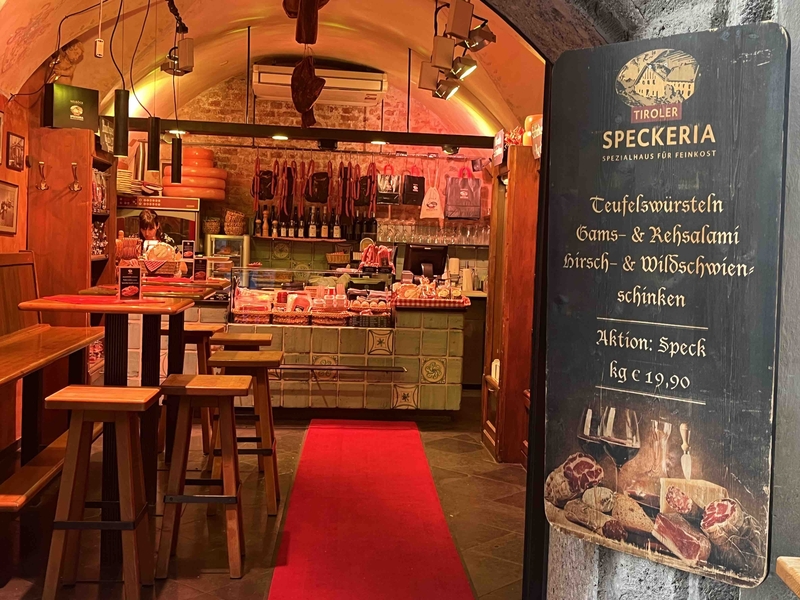
Speck, snow pine schnaps and a market packed with pfifferlinge
Much of that elegant, pedestrianised thoroughfare is given over to mainstream shopping and refuelling opportunities. Head instead for the maze of lanes in the Altstadt. Kick off at the Hofgasse to sample cured meats at the Speckeria or taste local spirits at Tirol Geniessen, including the rare local Zirbenschnaps, slowly distilled from a base of stone pine cones. Then on past the Goldenes Dachl to the Herzog-Friedrich-Strasse for a choice of tipples and snacks.

Maybe grab an award-winning Bierol Mountain Pale Ale and a wurstel at at Franzs Bier + Bar + Beisl or sip fine wine from a Riedel glass in the 600-year-old wine cellar of the Goldener Adler (Golden Eagle). From the man who brought us Faust they quote: “Life is too short to drink bad wine.” Goethe is not the only celebrity to have stayed at this famous hotel. Also name checked on marble plaques by the entrance are Mozart, Paganini, Jean Paul Sartre, Albert Camus, astronaut John Glenn, King Leopold of Belgium and many more.
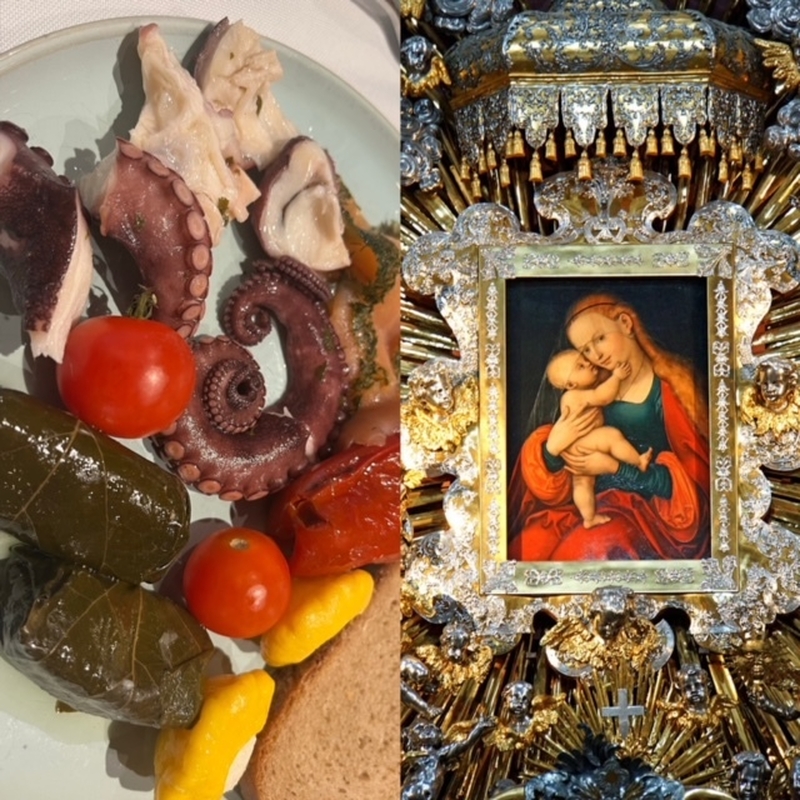
If this all feels too grand, the Invinum wine bar next door offers a cute selection of Austrian wines at very reasonable prices and the boutique hotel Weisses Rössl, around the corner in Kiebachgasse, offers beautifully balanced versions of classic Tirolean dishes in wood-panelled dining rooms upstairs with the locals or on its roof terrace. Go for the veggie Tris – Fried cheese dumpling, cooked spinach dumpling and a local noodle specialty served with Tyrolean cheese and brown butter, their perfect match a peppery Grüner Veltliner white. As a starter I had to get my tongue round Pffiferlingecremsuppe (chanterelle cream soup). These yellow, bell-like wild mushrooms were in season. So there was an abundance on every veg stall in the lively riverside market hall at prices that tempted us to smuggle home a punnet in the hold luggage.
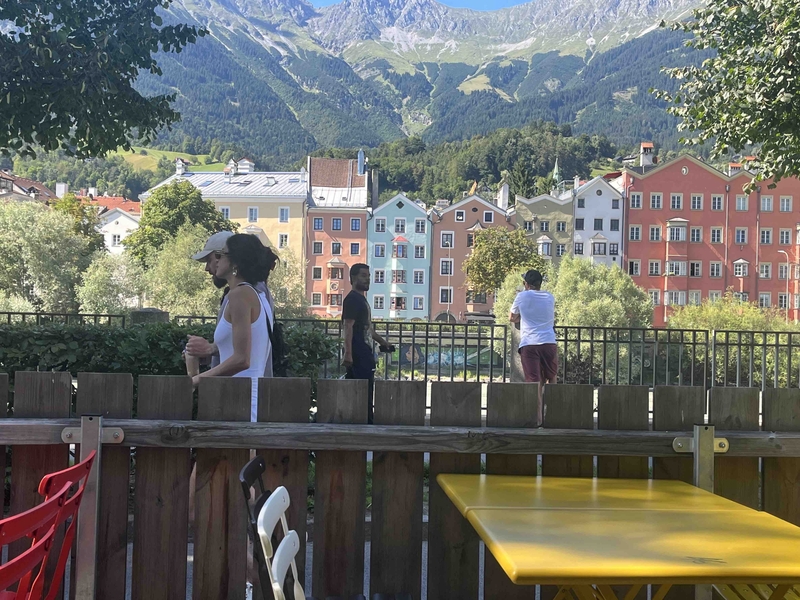
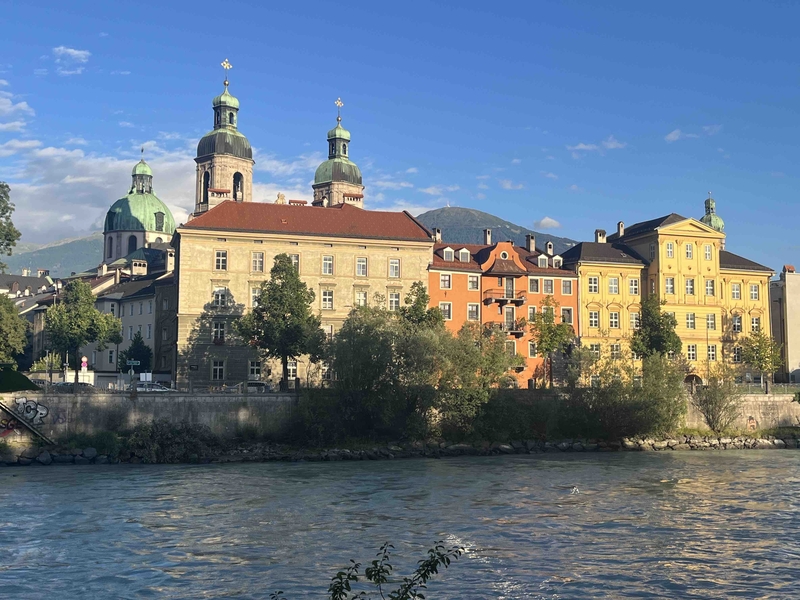
Contemporary cuisine and craft beer in cool settings
Location would demand hunkering down at one of the market’s bars or cafes with a view of the colourfully painted ancient quarter across the river (well worth a trip over for a quiet evening stroll) but affordable quality lies elsewhere. We bookended our Vivaldi concert with supper at Das Brahms and a beer at Tribaun on Museumstrasse. The first is a sleek all-day dining operation inside the House of Music, a black glass cube of a building helping to regenerate music in the city; the second is as close to cutting edge craft beer destination as it gets in the town (though BierWelt Tirol on Marktgraben is an excellent bottle shop).

Innsbruck is hardly high rise, yet it has its panoramic eating and drinking spots, notably two top floor neighbours in the glass-roofed Rathausgalerien. This upmarket shopping complex was conveniently behind our equally cool hotel, Stage 12. At Lichtblick the Gault Millau one toque rated food is as elevated as the site, while the circular Bar 360° is perfect for a cocktail nightcap with the lights of the city shimmering below.
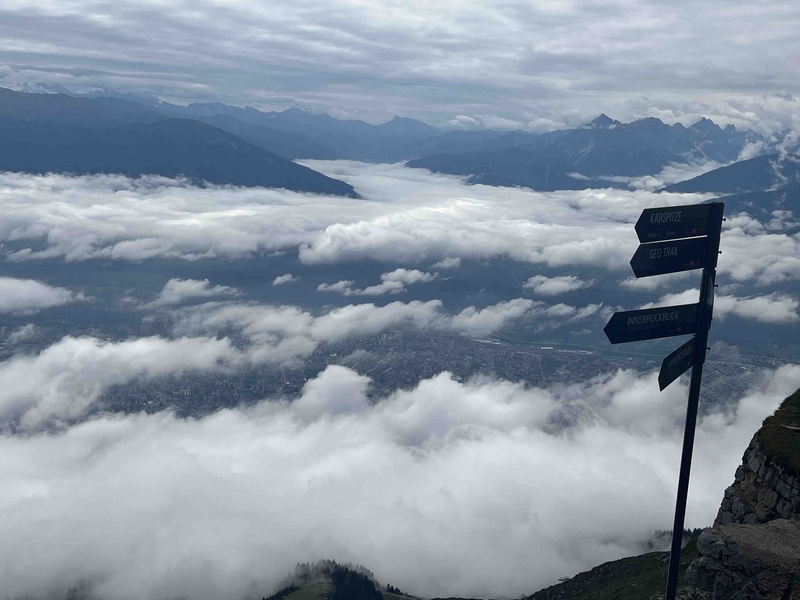
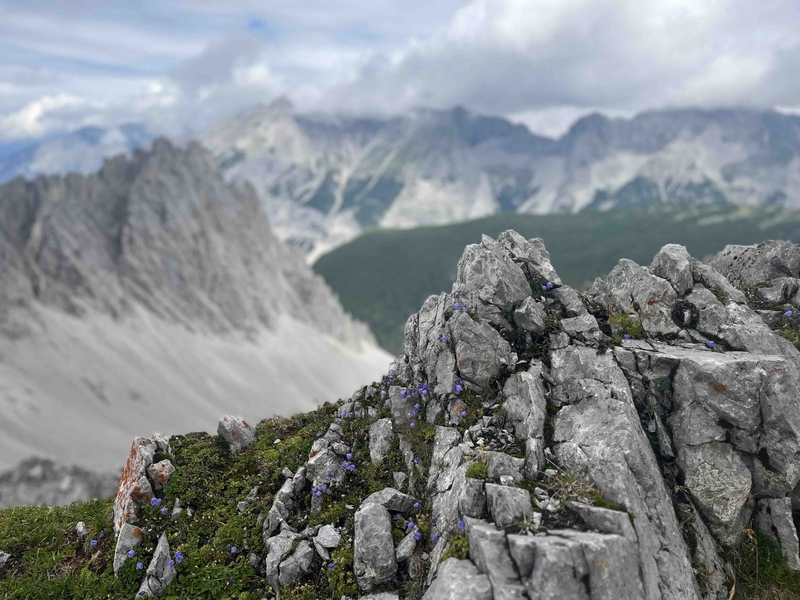
Hitting the heights – Bergisel Ski Jump, Zirbenweg Trail and Seegrube
Of course, there are panoramas and panoramas. Innsbruck may be 574m above sea level but the surrounding mountains take it to a whole new level. Inside half an hour you can soar a further 1,800m to the Hafelkekar (Top of Innsbruck), highest point in the Nordkette chain. You reach it via the Nordekettenbahnen funicular to the Hungerburg, then two stretches of cable car, followed by a 15 minute stony clamber. The philosophically inclined can stop off at Seegrube with its sun terrace and walk ‘The Perspectives Trail’, following a series of markers etched with Ludwig Wittgenstein quotes.
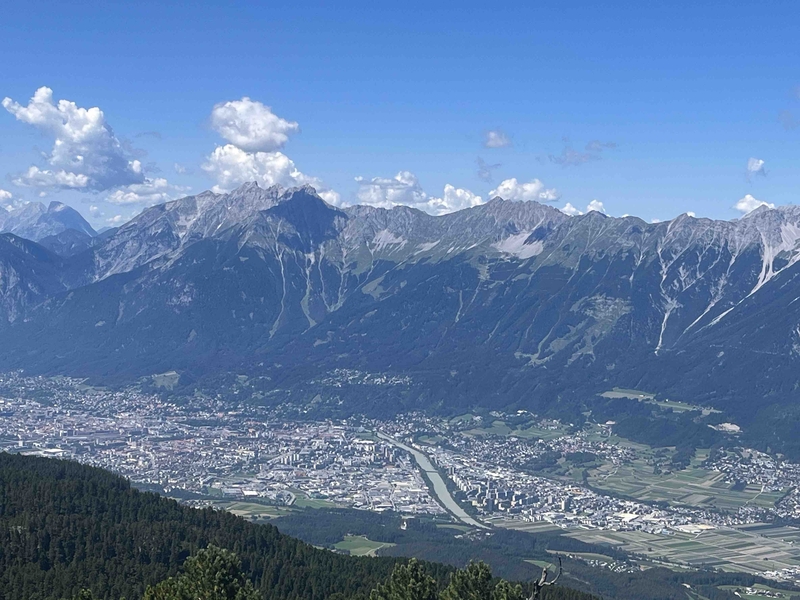

On the opposite, south side of the valley another cable car ride, the Patscherkofelbahnen will sweep you up to a realm of rich summer pastures and the tinkle of cow bells. The Zirbenweg Trail offers a not-too-stressful two and half hour hike, on occasions through centuries-old stone pines (hence the Zirbe) but mostly with views of the Inn Valley below and some 4,000 distant peaks. Ready for refreshment? Like a mirage, the Tuffenalm Alpine inn appears in your sightline just before the final push to the Glungezerbahn, which will take you down to your bus connection back to the city.
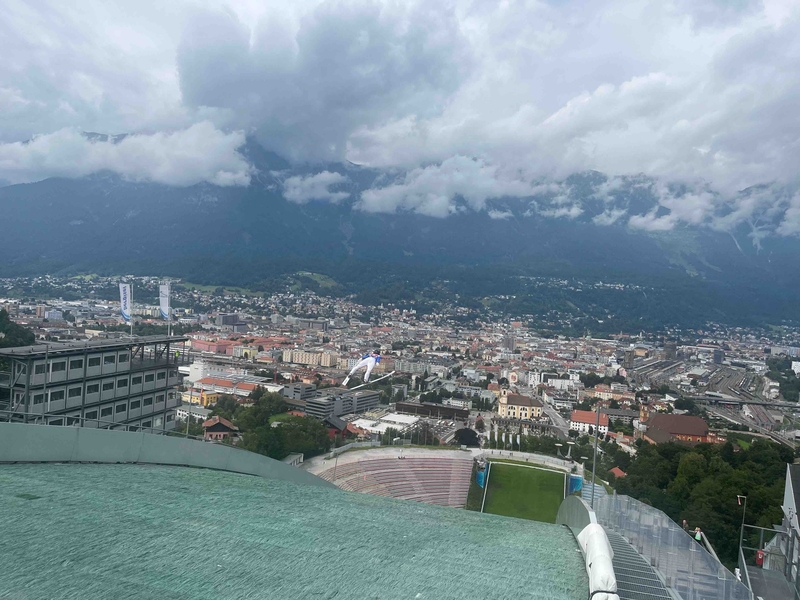

All this landscape is transformed in winter, but summery Innsbruck has its own spectacular taster – the Olympic Bergisel Ski Jump, designed by the late, great Zaha Hadid (as was the Nordekettenbahnen ground terminus). It’s just a couple of kilometres from the city centre but dominates the skyline from many directions. I loved the aspect from the wooded gorge behind. An inclined elevator whisks visitors up to a height of 250m. The slim tower features a top floor restaurant and viewing terrace that afford uninterrupted 360 degree views of the all-weather jump and far beyond. Pay your 11 euro entrance fee any day and you’ll be regularly treated to a ski jumper demonstrating awesome skill and daring. Imagine the atmosphere when the 26,000 capacity stadium is packed for a competition.

Wolves and bears roam Europe’s highest zoo
The bells, the bells! Innsbruck is a city of tintinnabulation. The family-owned Grassmayr Foundry, near the Wilten Basilica, has been casting them for 400 years and their bells can be found in over 100 countries. Their fascinating museum shows how it’s done. Church towers soundtrack the city, culminating in the sonorous noon chimes from St Jacob’s Cathedral. Cue the wolves at the Alpen Zoo to howl in unison. That’s the legend anyway. We arrived too early and on a hot day the small, shtum pack were reluctant to leave their snooze shelter. At least we glimpsed more of them than the promised giant black bears, which had obviously gone totally to ground. Consolation came in the form of vultures and fellow birds of prey plus –– an Instagrammer’s dream – a cute baby ibex scuffling with its mum. To reach the zoo, Europe’s highest lying, you get off the Nordekettenbahnen at the stop before the Hungerberg.
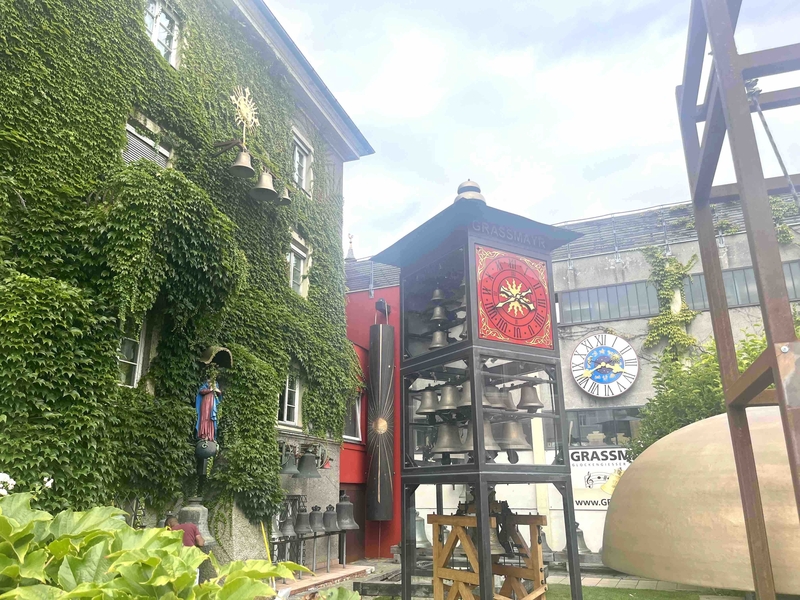
That mountain gets its name from the former Mariabrunn Inn up there, where the food was reputedly so shocking punters invariably left hungry. That will never prove the case in the Innsbruck of today.
Fact file
Neil Sowerby flew to Innsbruck with jet2.com, which operates weekly services in summer, with greater frequency in the ski season. The airport shuttle bus into the city centre takes less than 15 minutes.
Neil stayed at the Stage 12, Maria-Theresien-Straße 12, 6020 Innsbruck. +43 512 312312. Apart from its hugely convenient situation, it also boasts a spa, a remarkable breakfast offering that includes grilled octopus, dolmades and a cornucopia of exotic fruit plus a bar voted one of the best in Austria. Included in a stay over two nights here (and at other partner establishments) is a free Innsbruck Welcome Card, which provides you get free public transport in the city and the region, the free guided active programme and discounts for swimming pools, lakes and many other sights and attractions. Three nights or more gets you the Welcome Card Plus, which includes four free trips on selected lifts and cable cars.
Serious Innsbruck explorers should purchase The Innsbruck Card, which gives you free entry to 22 museums and attractions, one upward and one downward journey on selected lifts and cable cars in the region, free use of public transport and free use of the Sightseer hop-on hop-off bus. The card can be purchased for 24, 48 or 72 hours starting at 53 euros for 24 hours.
For Innsbruck tourist information visit this official link.
Save money on Swarovski Crystal World (23 euros instead of 25) by buying tickets in advance online. The shuttle bus leaves from the Congress Centre.













